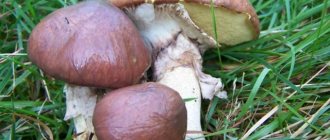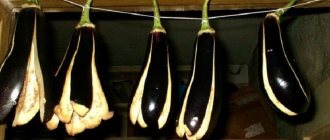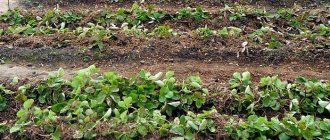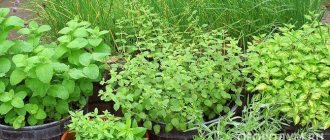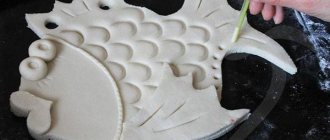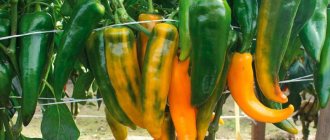In cooking, mint is used both fresh and dried. It is noteworthy that properly dried spicy herb is practically not inferior in taste and aromatic qualities to fresh leaves, and, most importantly, retains most of the beneficial substances. At any time of the year it can be purchased in the department with spices and seasonings. But if you decide to dry the mint yourself, then you can do this in several ways.
When and how to collect
This is the very first and most important stage of preparation. If the collection is carried out incorrectly, then all other actions will not lead to the desired result, and instead of a useful harvest for the winter, you will just end up with dry grass with a pleasant aroma.
The best time to collect mint is during its flowering period, from about July to early August. The flowering plant is maximally filled with useful substances and essential oils. Flowering times are approximate. The exact time depends on the growing region and plant variety.
There are some nuances:
- If you only need to dry the leaves of the plant, then they are collected at the very beginning of flowering, immediately after the first buds appear.
- The stems along with the inflorescences are cut off later, when the latter begin to open. It is mint flowers that contain the highest concentration of essential oil.
How to use an electric dryer
You are lucky if you have an electric dryer, which is used to obtain dried fruits. Then the greens can be dried in it.
The leaves are laid out on a wire rack in 1 layer. Turn on the device to the minimum temperature.
Of course, drying will take longer this way, but the maximum beneficial properties of mint will be preserved.
Check the grass periodically to make sure it doesn't dry out.
After completing the procedure, transfer the dried product to the selected container.
General rules for collection
Leaves from young plants are not suitable for drying for the winter. They dry out too much and lose their flavor. Early spring mint is used fresh to make mint tea.
- The best time for collection is dry sunny weather, around 10-11 am, when the dew has already dried. During the day, in the sun, mint becomes withered and loses its juiciness.
- If, during the first harvest, you cut off the tops of the plant by only a third, then during the season the mint bushes will have time to get stronger and will delight you with a new harvest.
- It is better to cut the stems with pruning shears or a sharp knife. Leaves can be torn off by hand.
- Branches that are yellowed, limp or damaged by pests are not used.
- Mint, like any other medicinal plant, is collected only in ecologically clean areas, away from industrial enterprises, roads, factories, etc.
- The collected raw materials are placed in a loose layer into spacious baskets, without compacting.
- Drying begins immediately after cutting. After 2-3 hours, the leaves begin to lose their rich color.
What plants are suitable for drying?
To ensure that the mint you collect is not just a dry, useless herb, but a real container of the best culinary and medicinal properties, you should follow several important rules when collecting it:
1. You should not collect plants near roads and industrial enterprises if, in addition to the aroma and pleasant taste sensations, you do not want to be “loaded” with impurities of any substances harmful to health.
2. Young mint is not suitable for harvesting, since it does not retain its aroma and medicinal properties, and also dries out significantly during the drying process.
3.If you want to dry leaves with stems, you must wait until the plants have fully flowered. Only leaves can be collected before flowering, but after the inflorescences have set. The highest content of essential oil is in a mature plant. During the flowering period, mint becomes most fragrant.
4.Mint should be cut to one third of the length of the main stem. This way the plant will be able to regrow and you will get another extra harvest or even two during the season.
5. It is important to start collecting in dry weather, as well as after the dew has disappeared, otherwise the mint will not remain green and may acquire a brown tint after drying.
6. For drying, you must use only high-quality material: discard damaged and diseased plants immediately.
Do I need to wash it?
The collected raw materials must be inspected and sorted, weeds and spoiled leaves must be removed. As a rule, twigs are not washed before drying. Dusty-looking bushes are doused with water in advance, and only after waiting until they are completely dry are they harvested.
If this was not possible, and the purity of the plant is in doubt, then the collected raw materials should be rinsed under running water (under a tap, hose, watering can), without soaking. Then gently shake, blot each leaf with a woven or paper towel, spread in one layer on a clean cloth and leave to dry completely. This initial drying is carried out in the shade to prevent the essential oils from evaporating.
Do not start drying mint while it is still wet. The raw materials will darken and become moldy. The workpiece will be hopelessly damaged.
How to prepare mint for the winter
But if in the summer, having picked a few fragrant branches, it is so easy to prepare a healthy tea or decoction, or use fresh leaves in a soft drink or baked goods, then in the winter all the mint ends up under the snow. How to keep mint fresh for the winter? Are there ways to use the medicinal properties of the plant and enjoy its aroma until spring?
If a couple of decades ago Russian housewives, out of habit, only mint sushi, today, thanks to the development of technology and the influence of culinary traditions of other countries, the possibilities have increased significantly. But before you prepare mint for the winter, it needs to be collected and prepared for processing.
Better to dry or freeze
Frozen mint, like fresh mint, is added to first and second courses and used to make tea and other drinks and desserts. Freezing the grass, as well as drying it, should also be done on the day of collection.
It is believed that with this method of storage, greens completely retain their color and pleasant aroma. However, its re-freezing is not allowed.
There are several ways to freeze mint for the winter: chopped or whole, in ice cubes. Most often, vacuum bags with a zip fastener are used for these purposes. But if there is no room for them in the freezer, then drying is the best option.
How to keep mint fresh?
If you need to preserve mint for a short period of time, then, as an option, the stems can be placed in a container with water
. So it will stay fresh for several days, and if you change the water with fresh water every day, then even longer.
If you need to preserve mint, then you can’t do without a refrigerator. Before storing, rinse the stems, place on a paper towel and dry well.
To store in the refrigerator, you will need a plastic container or ziplock bag. Put mint in a bag
and after releasing the air from the bag, seal it tightly and put it in the refrigerator.
With this method, mint stays fresh for about a week
.
How to dry
Now that the raw materials have been properly collected and prepared, you can begin drying. There are several ways:
- naturally (in bunches or in bulk);
- in the oven or microwave;
- using an electric dryer.
Naturally
At home, it is better to dry mint in its entirety. Cut leaves lose essential oils over time. At the same time, the crushed workpiece is more convenient to store and use.
Drying mint at room temperature or in the fresh air takes a long time and requires a certain amount of space. But with this method, the dried product retains its beneficial substances as much as possible. You can dry it:
- In bulk. It is better to separate the leaves from the stems and dry them separately, since the latter take a little longer to dry. The sorted raw materials are laid out on paper (not newspaper) or cotton cloth in one layer. During the drying process, the workpiece is regularly mixed and inspected, removing damaged leaves.
- In bunches. In this case, the stems are left and tied loosely with thread, collecting 5-6 branches in a bunch. Then they are hung on a rope or strong thread under a canopy, at home, in a barn or attic at some distance from each other.
In both methods, the place for drying must be chosen dry, well ventilated, away from direct sunlight.
If weather conditions permit, the tray of grass can be kept on the veranda, balcony or under a canopy, but covered with gauze to protect it from insects and dust. Any other fabric is not suitable for these purposes; the raw material may be prohibited due to lack of air. At night, the tray with the preparation is brought into the apartment or house.
In the oven
It is not advisable to dry mint in the oven, nor near heating appliances. Essential oils evaporate, the grass loses its rich color and aroma.
But if you lack time and space for drying, you can use this method: at the lowest temperature setting and with the cabinet door slightly open. Line a baking sheet with parchment paper and spread mint on it in an even layer and place in a heated cabinet for 30 minutes. Then remove and dry the grass in the open air.
Under no circumstances should the still hot workpiece be placed in storage containers. This should be done only after it has cooled completely.
In the microwave
To dry, mint is laid out in one layer on a flat dish and placed in the microwave. Turn on the device at short intervals of 10 seconds. This will allow you to control the process to prevent the plant from drying out.
In an electric dryer
A special dryer for vegetables and fruits is the simplest and least labor-intensive method. Required:
- Arrange the prepared mint in one layer on the racks.
- Set the minimum drying mode to 30-45°C.
- For uniform drying, it is recommended to occasionally rearrange the trays.
- Periodically check the readiness of the herb so as not to dry it out.
How to store fresh mint
Fresh mint will keep well in the refrigerator for a week. To do this, the branches are wrapped in a moistened towel or placed in a container. If you want to place mint in a plastic bag, you need to make sure that no air enters the container.
Drying mint
Drying mint does not require much effort and time:
- it is easier to keep cut stems tied into bunches, which are hung in a shaded, ventilated room;
- It is suggested to experiment and add sprigs of other herbs to the collection, giving various shades to mint drinks;
- If cut plants are placed on pallets for drying, the layers should not be thick. The raw materials are mixed regularly.
See also
TOP 10 recipes for preparing mint and lemon balm preparations for the winterRead
Readiness is determined by the leaves - if they easily separate from the stem and crumble, it’s time to chop the mint and store it in paper bags and glass jars.
Freezing a plant
In order to have fragrant greens on the table all year round, you need to pay attention to winter frost. Today there are several freezing options. At the same time, the color of the leaves, fresh taste and beneficial characteristics are preserved. Whole leaves are used for brewing tea, decorating dishes, making desserts, and cocktails. The crushed preparation is suitable for sauces and baking.
Whole leaves
The cut greens are placed in cold water for five minutes, regardless of where they grow, washed under the tap and laid out in a thin layer on towels. It will take half an hour to get rid of excess moisture. Acceleration of the process is possible by mixing the raw materials.
Dried mint is sorted: large, healthy leaves and the upper part of the shoots are placed in small jars or plastic containers. It is incorrect to use plastic bags: the workpiece becomes too fragile. The filled container goes into the freezer.
Whole branches
Freezing stems with leaves is not prohibited. A thick bag is filled with portioned bunches of mint, carefully rolled into a tube and placed in the freezer. During the procedure, you need to monitor the safety of the leaves.
Finely chopped
Mint leaves are useful in winter in crushed or pureed form. This type of freezing can be conveniently done in special mini-molds or assorted sweets inserts. The leaves are torn off the washed branches and left for 10 minutes to dry. The prepared raw materials are finely chopped with a knife or crushed in a blender. The resulting puree is placed in molds and placed in the freezer. The frozen workpiece is poured into bags made of dense polyethylene and closed hermetically.
Rules for collecting mint for winter harvesting
To prepare mint, you should follow the basic rules for collecting:
- It is better to cut the plant rather than tear it. Both whole bushes and individual leaves are suitable for collection. The rigid base of the stem is not suitable for storage and use, so when collecting a whole plant, cut off 2/3 of its crown. In addition, a plant cut in this way can grow again in the fall.
- Go for grass in June and July.
- It is not advisable to harvest the crop on a rainy or foggy day. Moisture that accumulates on the bush in large or barely noticeable drops of dew turns the leaves brown and can cause mint to rot during storage.
Mint can be preserved both dried and frozen. - Only the fully blossomed plant should be harvested. Otherwise, you will not receive the full spectrum of healing properties. Mint inflorescences are pinkish or light lilac in color.
- Place cut samples in the shade while working. The sun will evaporate the beneficial essential oils from the greens.
Advice. Of course, you should not harvest mint near roads or livestock farms. You should also be sure that the area is not treated with chemicals or fertilizers. Otherwise, instead of a useful product, you can get a harmful one.
For collected mint, you can organize short-term storage in the refrigerator. Wrap the leaves or shoots in dry paper towels and place in a resealable container or plastic bag. This method will preserve the aroma and taste of mint for about 1 month. Then parts of the plant will darken, become limp and lose their medicinal properties. There are other options for longer storage.
